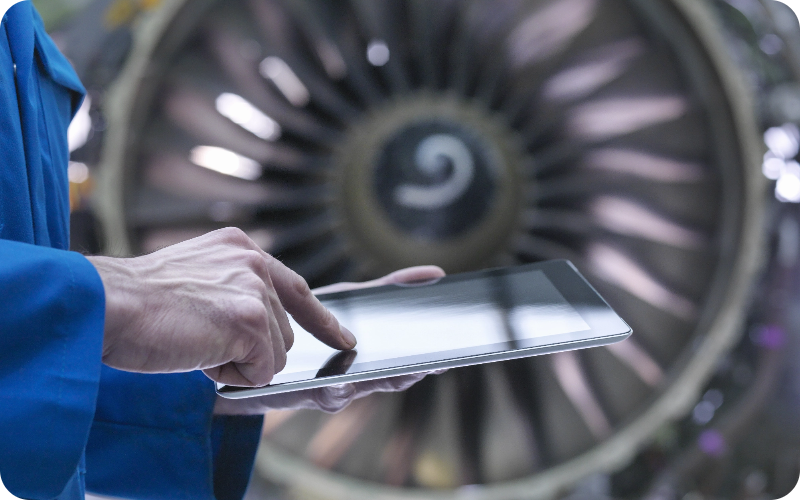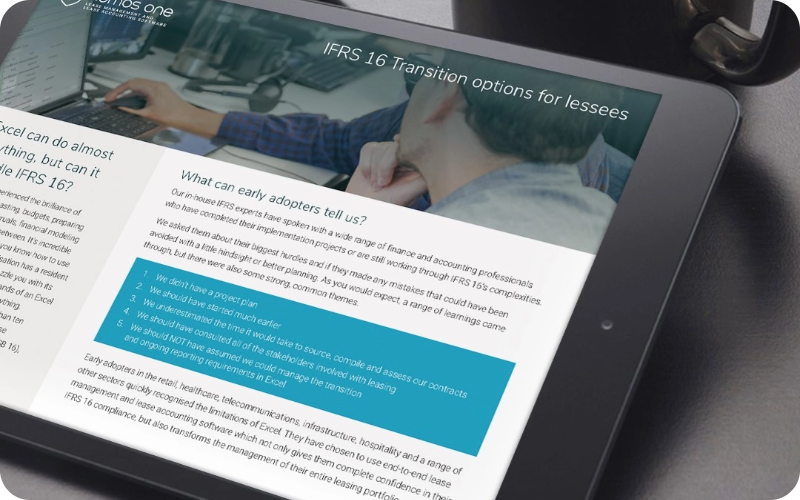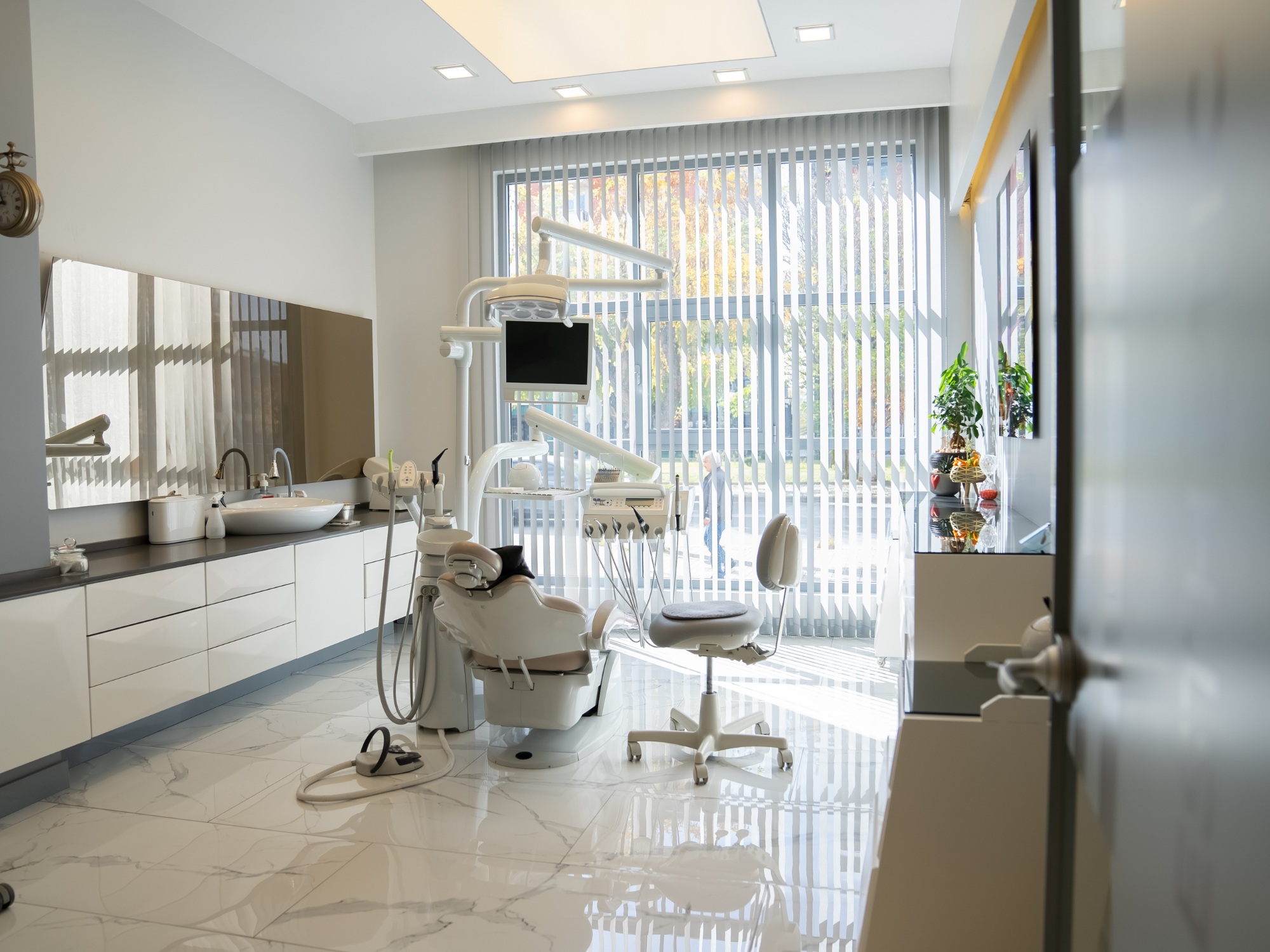The introduction of the International Financial Reporting Standard 16 (IFRS 16), also known as AASB 16 in Australia, marked a significant shift in how lease accounting in the healthcare sector. The standard aims to bring more transparency and accountability to financial reporting. But what does this mean for healthcare accounting for leases, when providers have complex lease portfolios comprising an intricate web of medical facilities, diagnostic centres, research institutions, hospitals, clinics, IT infrastructure and specialised equipment?

The essence of IFRS 16 (AASB 16) in healthcare
Essentially, IFRS 16 (AASB 16) brings most leases onto the balance sheet, bettwe representing a healthcare institution's lease obligations. Before IFRS 16, leases were categorised as operating or finance leases. Operating leases, often used for equipment like MRI machines or facility spaces, were not included on the balance sheet. This often led to a need for more transparency about an organisation's lease commitments. IFRS 16 eliminates this distinction is eliminated for lessees, requiring almost all healthcare accounting for leases to be recorded on the balance sheet.
This change is particularly pivotal in healthcare, where leasing high-value equipment and facilities is commonplace. For example, under IFRS 16, a hospital leasing MRI machines will now recognise these assets and corresponding liabilities on their balance sheet, providing a clearer financial picture and a more accurate reflection of an organisation’s financial commitments.
The recognition of a right-of-use asset and a corresponding lease liability for most leased assets affects various aspects of the financial statements, including liabilities, assets, and EBITDA (Earnings Before Interest, Taxes, Depreciation, and Amortisation).
Challenges presented by IFRS 16
Healthcare entities face unique challenges in implementing IFRS 16:
Complex lease portfolios
Many healthcare providers lease a wide range of assets, from entire medical facilities to specialised equipment, such as X-ray machines and patient monitoring systems. The IFRS 16 standard requires each of these leases to be identified, classified, and accounted for separately, which can be complex.
Variable lease terms
Lease terms for assets can vary significantly in the healthcare sector, especially with rapidly advancing medical technology, requiring frequent updates to lease agreements.
Impact on financial ratios
IFRS 16 can substantially impact key financial ratios, which are critical for stakeholders and investors in the healthcare industry. Recognising lease liabilities affects financial metrics like debt-to-equity ratios, potentially affecting credit ratings and investment decisions as well.
Increased administrative burden
The shift to balance sheet recognition demands meticulous record-keeping and continuous monitoring of lease terms and revisions, adding to the administrative workload.

Opportunities for better management & transparency
Despite the challenges, IFRS 16 offers opportunities for the healthcare sector:
Improved transparency
By bringing lease obligations to the forefront, IFRS 16 enhances the transparency of financial statements, making it easier for stakeholders to assess the financial health and performance of a healthcare institution.
Strategic lease management
This standard encourages healthcare providers to reassess their leasing strategies. For instance, determining leasing vs buying a new piece of medical equipment becomes a decision grounded in financial strategy rather than just operational need.
Enhanced decision-making
With a clear view of all lease obligations, healthcare organisations can make data driven decisions about resource allocation, asset management and long-term financial planning.
Streamlined lease accounting
The need to comply with IFRS 16 encourages healthcare entities to invest in a modern lease accounting system, leading to more efficient and centralised lease accounting processes.
The benefits of these can be seen in the following examples. If a regional hospital system that recently adopted IFRS 16 and, in doing so, started recognising several previously undisclosed leases for medical equipment and facility spaces, this has the potential to lead to a more comprehensive financial strategy, focusing on optimising lease terms and reducing unnecessary expenses.
Another example is how a healthcare network can use the transition to IFRS 16 as an opportunity to centralise its lease management. By implementing specialised healthcare lease accounting software, they are able to achieve greater efficiency and simplify compliance, while gaining valuable insights into their lease portfolio, which reflects positively on their performance.
Best practices for navigating healthcare accounting for leases
To effectively navigate the complexities of IFRS 16 (AASB 16), healthcare organisations can adopt several best practices:
Maintain a comprehensive lease inventory
An up-to-date inventory of all leases, including details of the medical equipment, properties, and any other leased assets that are regularly reviewed and updated to reflect any changes or new leases can help streamline lease management processes, save time and reduce costs.
Implementing a lease management system
A robust lease management system or software is essential for effective lease portfolio management. Such systems help track and manage lease data and offer lease accounting automation through the calculation of lease liabilities and ROU assets, promoting accuracy and efficiency.
Provide regular training and education
It is a good idea to ensure that your accounting and finance teams are well-trained and updated on the nuances of IFRS 16. Regular training sessions will help in understanding the standard’s implications and how they apply specifically to the healthcare sector.

Engage with healthcare lease experts
Collaborate with external consultants or healthcare accounting experts, especially in the initial stages of implementing IFRS 16. Their expertise can provide valuable insights into the standard's application and help in navigating complex lease scenarios.
Integrate financial reporting
Integrating lease accounting into the overall financial reporting and planning processes helps ensure that the impact of lease liabilities is considered in strategic financial decisions, such as budgeting and financial forecasting.
Proactive compliance and review
It is important to stay proactive in compliance. Regularly review and update your accounting practices to align with any amendments or interpretations of IFRS 16. This proactive approach will help in mitigating risks associated with non-compliance.
Stakeholder communication
Finally, maintain open and transparent communication with stakeholders about how lease accounting changes affect the organisation's financial statements. This transparency helps in managing expectations and provides clarity.
In conclusion, adopting IFRS 16 (AASB 16) in healthcare accounting for leases presents challenges and opportunities for the healthcare sector. Healthcare providers must adapt to these changes, leveraging technology and strategic planning to achieve compliance and capitalise on the benefits of the current lease accounting landscape.
While IFRS 16 necessitates a more detailed and transparent approach to accounting for leases, it also opens doors for improved financial management, presenting a valuable opportunity for the healthcare sector to gain a deeper understanding of their financial commitments, streamline lease management processes, and make strategic decisions that align with their long-term financial goals.
By aiming to implement the best practices mentioned above, healthcare providers will be able to comply with IFRS 16 and leverage it to enhance their financial management and strategic planning. These practices foster a more transparent, efficient, and accountable approach to lease accounting, which is crucial in healthcare's dynamic and financially intricate world.
If you’d like to streamline your compliance, download our IFRS 16 checklist for the healthcare sector and navigate the complexities with confidence!

























